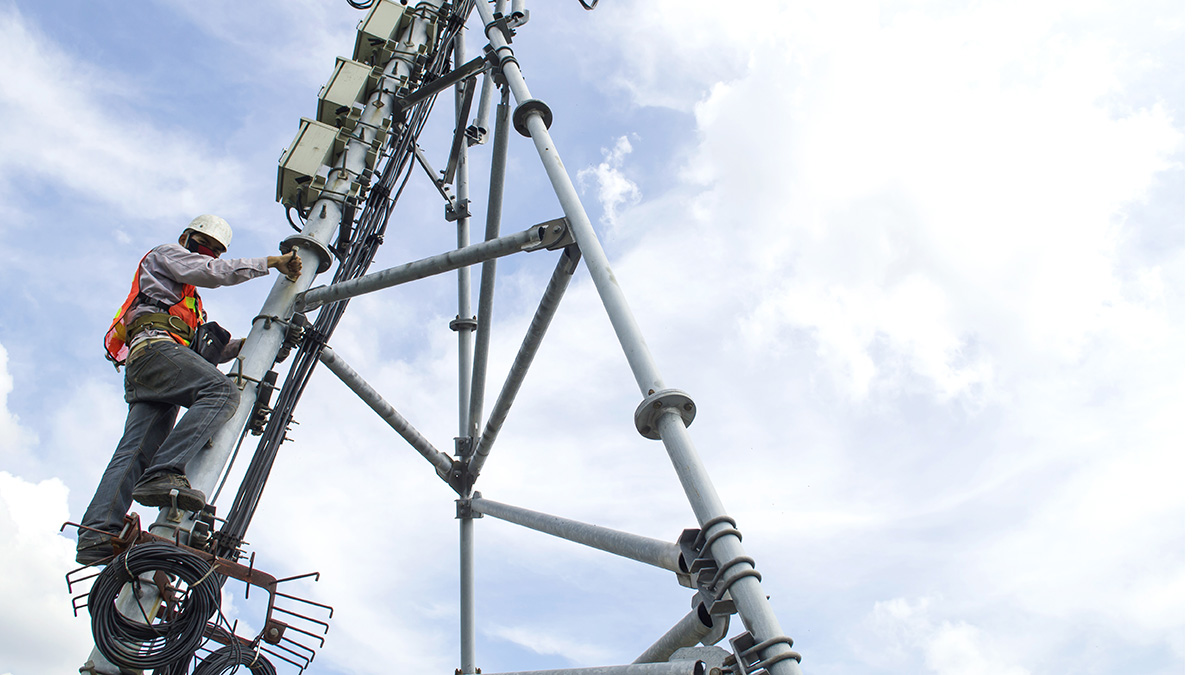We live in the digital age where organizations and companies depend on the network infrastructure to carry out many of their tasks and business processes. These telecommunications networks are made up of elements such as hardware, cabling and software necessary to interconnect systems and applications in a secure and efficient manner. What is a telecommunication network? We will see what it is, the different types that exist, and how to install this technology. If you want more information, you can expand it in the article on what is a network infrastructure.
What is a telecommunication network?
A telecommunications network is a system composed of electronic devices and communication equipment that allow the exchange of information in different formats through a network.
These networks provide efficient, fast, and secure communication and data transmission, regardless of how far away the users connecting to the network are.

Types of networks that exist
There are different types of networks that can be classified depending on the area they cover or the type of data or technology they use. Some examples of networks that are commonly used today are:
Local Area Networks (LANs)
A local area network is a type of telecommunications network that connects electronic devices in a relatively small geographic area, such as a building, office, or home.
These networks are designed to facilitate communication and data exchange between devices that are in physical proximity.
Wide Area Networks (WANs)
Wide area networks are telecommunications networks that cover very large geographical areas, even interconnecting locations that are far away or globally.
WANs are used in business environments to connect branches, offices, or retail outlets in industry, to remotely monitor and control devices, and in government and research applications for data transmission between distant locations.
Metropolitan Area Networks (MAN)
A metropolitan area network is a telecommunications network that connects different locations within a city or metropolitan area, positioning itself as an intermediate solution between LAN networks and WAN networks.
Wireless networks
Wireless networks use communication technologies based on radio frequency or microwave signals to transmit data through the air, eliminating the need for physical connections via cables.
This type of telecommunications network offers greater flexibility and mobility, since it is not necessary for the devices to be located in a fixed area. They are ideal networks for connecting mobile devices such as smartphones, tablets, video surveillance cameras or laptops, among others.
Among the different kinds of wireless networks we have:
- Based on radiofrequency technologies: Wi-Fi networks.
- Using technologies like 3G, 4G or 5G: mobile phone networks.
- Ad hoc networks (automatically created between nearby devices using technologies such as bluetooth or NFC).

Installation of a telecommunications network and components
The installation of a professional telecommunications network requires a series of essential elements and components, among which we can highlight:
Cabling
Current wiring is based on communication standards that allow large amounts of information to be transmitted quickly and safely. Choosing the right type of network cable is essential to create a solid, efficient infrastructure that guarantees the highest level of performance and data security.
Hardware
In a telecommunications network, a series of hardware elements are used that are key to its operation, such as servers, routers, switches, patch panels, firewalls, etc. The quality and performance of these devices is crucial to build a powerful and reliable infrastructure that guarantees the best level of communication.
Electrical supply
A network infrastructure uses different equipment and electronic devices that need electrical current to function, so it is important to have a good supply system and elements that guarantee access to energy at all times, such as UPS equipment that, in addition , help to filter the usual fluctuations of the electrical network, protecting the devices.
Software
Another necessary part of a telecommunications network is the software needed to manage different tasks and processes.
For example, applications to control access to the network (manage different profiles and access roles), security software (anti-malware or firewall) or network monitoring tools, to evaluate the operation of the network, detect downed nodes, find out which devices and users are connected…
Internet access
Within a network infrastructure, you must have internet access to maximize its reach and be able to reach anywhere globally.
For this, it is necessary to opt for high-performance alternatives, such as symmetrical fiber optic services, which guarantee high bandwidth, both up and down.
Control and maintenance
It is essential that a good telecommunications network has an adequate monitoring system to control everything that happens in it. In addition, it is essential to have a maintenance system that guarantees optimal operation at all times, and that can resolve any incident or problem in the shortest possible time.
We have anserwed the question of what is a telecommunication network, some of the most common types that can be found and what these facilities and their components are like. For any company or business it is essential to have the best network infrastructure to guarantee optimal operation of your business that allows you to be more profitable and competitive.
At Microsegur we are experts in advanced surveillance and security solutions for companies, therefore, contact us to have access to professional services that adapt to what your business really needs.



